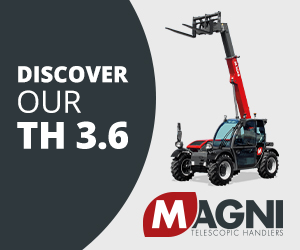Konecranes to Supply Cranes for New Waste-to-Energy Facility
Konecranes has been awarded a contract by Babcock & Wilcox Power Generation Group, Inc. (B&W PGG) to supply three fully automated 17-ton CMAA Class F waste-handling cranes for the Solid Waste Authority of Palm Beach County’s Palm Beach Renewable Energy Facility #2, a municipal solid waste-to-energy (WTE) power plant in West Palm Beach, Fla.
The facility that is capable of processing 3,000 tons of municipal solid waste per day, is the second phase of an already-operating WTE enterprise, also built and operated by B&W PGG. When complete, the two plants will be the largest WTE operation in North America.
Although WTE plants are common in Europe, the greater availability of open land in the U.S. and Canada has allowed North America to stand back from the process. But Florida, with its high water table that precludes burying waste, is a logical place for WTE to take off in the U.S.
“The important thing to understand is that for WTE crane designs in the past, the amount of cycles that the cranes underwent were highly underestimated,” says Pat Patton, senior operations specialist with Arcadis-U.S., (formerly Malcolm Pirnie) consulting engineer to the Solid Waste Authority. “Early U.S. cranes modelled on the steel industry were operating at levels three to four times their designed cycling rate in WTE applications. Therefore, the robustness of the cranes is critical to long-term performance. Konecranes takes this into consideration in their design and I’ve never seen a report of a failure from Konecranes on cyclic fatigue.”
The three cranes will be delivered in May of 2013. Konecranes service group will perform load testing and analysis runway alignment with its optic RailQ runway alignment survey in 2014. The facility’s burn tests will also occur in early 2015, with the target date for full operation and power generation in mid-2015.
The solid waste campus in Palm Beach County is a 1,320-acre site that already includes class 1 and class 3 landfills plus a compost facility, a sewage sludge processing area and a recycling operation, plus a refuse derived fuel (RDF) facility that processes 2,000 tons of solid waste per day. The new 3,000 ton-per-day project will be a mass burn facility, permitting trucks to dump solid waste directly into a pit. From there, the cranes move the waste into the hoppers to be burned, removing the need for interim handling with forklifts.
The cranes will be supplying three mass burn boilers at a combined feed rate of 125 tons per hour, along with the ability to receive up to 600 tons per hour of waste delivered by truck. In normal operations two cranes will work while one is held in reserve, but during peak conditions all three cranes will operate. The facility will generate up to 100MW of power. Depending on the season, the new plant can supply power for up to 50,000 homes.
The cranes will be controlled from a pulpit overlooking the pit. During receiving hours they will operate in semi-automation mode. The cranes will be pre-programmed to feed the hoppers, but the operator can step in and use the crane’s grapple to remove any large item, such as a refrigerator, that is not appropriate for burning. During non-receiving hours, the cranes will operate on their own in full automation.
“It is up to the operator on duty to get a sufficient stockpile homogenized and in place to minimize the need for intervention during the night time shifts,” says Patton. “The facility’s control room and the crane consoles are located in the same room, allowing interaction between the boiler operators and the crane operators. When the cranes are in full automation mode at night, the boiler operator can step in and perform any operation needed.”
Konecranes DynAPilot anti-sway technology allows the cranes to operate very close to the pit walls without causing damage, while the programmable anti-collision and protected areas features ensure safe operation around people. The process-duty GL Hoist provides the robustness needed to cope with a burn rate of 125 tons per hour and a receiving rate of 600 tons per hour.











